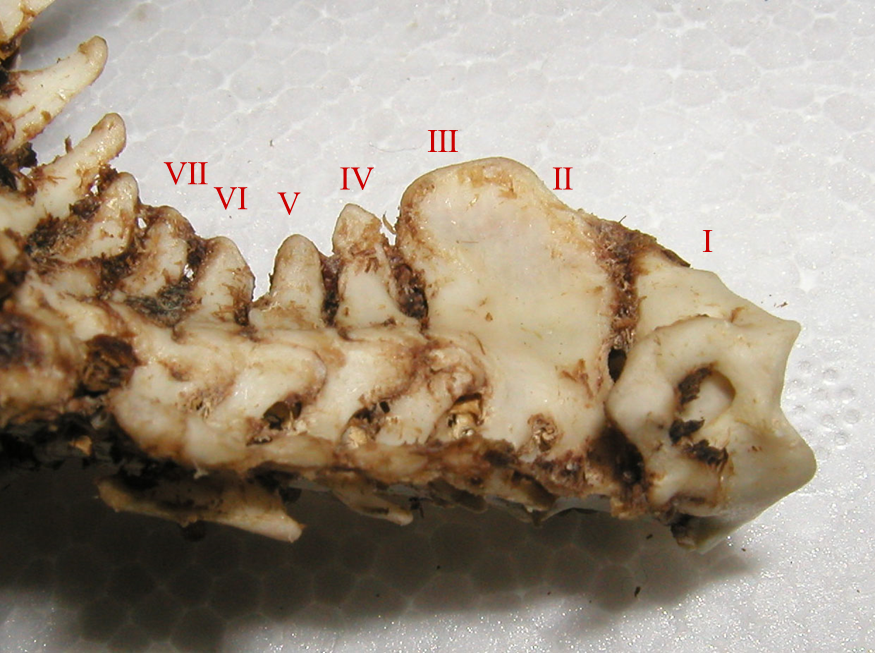East African Springhare on:
[Wikipedia]
[Google]
[Amazon]
The East African springhare (''Pedetes surdaster'') is an African
 Unlike South African springhare (''Pedetes capensis''), the second and third cervical vertebrae are fused in this species.
Unlike South African springhare (''Pedetes capensis''), the second and third cervical vertebrae are fused in this species.
mammal
A mammal () is a vertebrate animal of the Class (biology), class Mammalia (). Mammals are characterised by the presence of milk-producing mammary glands for feeding their young, a broad neocortex region of the brain, fur or hair, and three ...
found in Kenya
Kenya, officially the Republic of Kenya, is a country located in East Africa. With an estimated population of more than 52.4 million as of mid-2024, Kenya is the 27th-most-populous country in the world and the 7th most populous in Africa. ...
and Tanzania
Tanzania, officially the United Republic of Tanzania, is a country in East Africa within the African Great Lakes region. It is bordered by Uganda to the northwest; Kenya to the northeast; the Indian Ocean to the east; Mozambique and Malawi to t ...
that is closely related to the South African springhare. It is a member of the Pedetidae, a rodent
Rodents (from Latin , 'to gnaw') are mammals of the Order (biology), order Rodentia ( ), which are characterized by a single pair of continuously growing incisors in each of the upper and Mandible, lower jaws. About 40% of all mammal specie ...
family, and resembles a small kangaroo.
Taxonomy
''Pedetes surdaster'' was recognised by Matthee and Robinson in 1997 as a species distinct from the southern African springhare ''(P. capensis)'' based on genetic, morphological, andethological
Ethology is a branch of zoology that studies the behavior, behaviour of non-human animals. It has its scientific roots in the work of Charles Darwin and of American and German ornithology, ornithologists of the late 19th and early 20th cen ...
differences. ''P. capensis'' from South Africa has fewer chromosome
A chromosome is a package of DNA containing part or all of the genetic material of an organism. In most chromosomes, the very long thin DNA fibers are coated with nucleosome-forming packaging proteins; in eukaryotic cells, the most import ...
s (2n= 38) than does ''P. surdaster'' which has (2n = 40) and some other genetic variations. The species was confirmed by Dieterlen in 2005.
 Unlike South African springhare (''Pedetes capensis''), the second and third cervical vertebrae are fused in this species.
Unlike South African springhare (''Pedetes capensis''), the second and third cervical vertebrae are fused in this species.
Distribution
This species is found in central and southern Kenya and most of Tanzania. A single specimen has been recorded in Uganda near the Kenya border, at Mount Moroto. It is found from sea level up to an altitude over 2,000 m.Description
The East African springhare resembles a smallkangaroo
Kangaroos are marsupials from the family Macropodidae (macropods, meaning "large foot"). In common use, the term is used to describe the largest species from this family, the red kangaroo, as well as the antilopine kangaroo, eastern gre ...
(a marsupial in the family Macropodidae of Oceania), and is about the size of a rabbit
Rabbits are small mammals in the family Leporidae (which also includes the hares), which is in the order Lagomorpha (which also includes pikas). They are familiar throughout the world as a small herbivore, a prey animal, a domesticated ...
(''Oryctolagus cuniculus''). It is mid-brown, has large erect ears, very short forelegs, and long powerful hind legs. It moves in bounds of up to 12 feet and has a long tail fringed with black hairs which provides balance.
Ecology
The East African springhare isnocturnal
Nocturnality is a ethology, behavior in some non-human animals characterized by being active during the night and sleeping during the day. The common adjective is "nocturnal", versus diurnality, diurnal meaning the opposite.
Nocturnal creatur ...
and spends the day in an extensive system of burrows. It lives in semiarid grassland habitats. The diet is the green parts of plants, roots and other vegetable matter, and occasionally insect
Insects (from Latin ') are Hexapoda, hexapod invertebrates of the class (biology), class Insecta. They are the largest group within the arthropod phylum. Insects have a chitinous exoskeleton, a three-part body (Insect morphology#Head, head, ...
s.
References
{{Taxonbar, from=Q777220 East African springhare Mammals of Kenya Mammals of Tanzania Fauna of East Africa Taxa named by Oldfield Thomas East African springhare